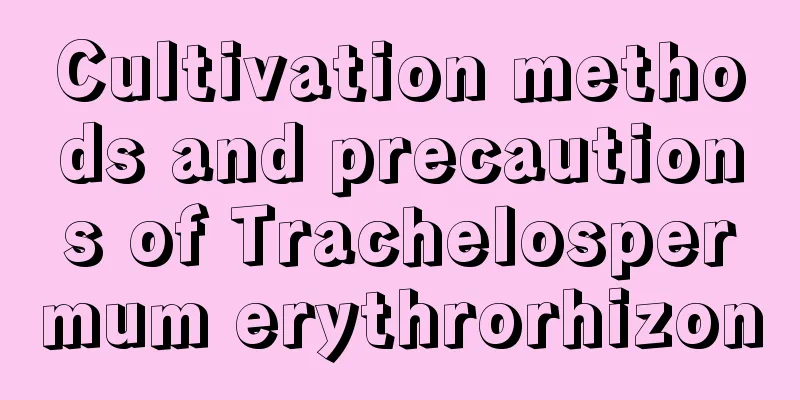The cultivation methods and precautions of Daxuesu

1. Maintenance methods1. Temperature: Fifteen to twenty-eight degrees is the most suitable. When the summer is too hot, its growth will be affected. Generally speaking, when the temperature is above 30 degrees, its growth will slow down. Therefore, it is best not to exceed 30 degrees, and the maximum should not be higher than 35 degrees. In winter, the temperature should not be below zero degrees. 2. Light: Snowdrops prefer light, but they are afraid of strong direct sunlight. Therefore, it can be placed in a place with scattered light. When encountering direct sunlight, it is necessary to block it as much as possible, especially in summer, when strong light will cause harm to it. 3. Watering: During the growth season of snow plant, it needs more water, and water is an essential element for its growth. Therefore, it is necessary to replenish it in time to keep the potting soil slightly moist. In winter, since its growth will not be particularly vigorous, the soil in the pot can be slightly drier. 4. Fertilization: Base fertilizer can be mixed into the soil. In addition, you don't need to apply too much fertilizer during the growing season, once or twice a month is enough. Moreover, the concentration needs to be controlled. 2. Breeding techniques1. Repotting: Try to change the pot once a year. You can use leaf mold, pine needles, willow leaves, bark, etc. and mix them in. Furthermore, some organic matter, such as peanut shells, needs to be added, but the proportion should not exceed 30%. If the plant grows very vigorously and becomes very large, the flowerpot also needs to be replaced. 2. Reproduction: It can be done by division. First, you need to select a mature, strong plant to serve as the mother plant. Then, use material such as leaf mold as a substrate. The plant can be divided from the root system into about three parts, not too many. After that, prepare different containers and plant them separately. 3. Problem diagnosis and treatment1. Diseases: Common diseases include "leaf blight", which are more common in summer. It can be treated with carbendazim and more ventilation should be provided. 2. Pests: The main pest is the "red spider". Since this pest is relatively small, it is not easy to spot. Moreover, it reproduces very quickly. Insecticide can be sprayed. And, it’s better to prevent it before it happens. IV. Other issues1. Toxicity: It is non-toxic and there is no need to worry about any harmful effects. 2. Can it be raised at home? Yes, it is suitable. It is an ornamental plant and is suitable for placement at home. |
<<: Garlic cultivation methods and precautions
>>: Spring grass cultivation methods and precautions
Recommend
What kind of soil is best for roses? What kind of soil is best for growing roses?
The most suitable pH value for roses is between 5...
How to water and fertilize azalea and how to take cuttings
1. Watering method Rhododendron has certain requi...
How to propagate Christmas cactus by cuttings
Required Tools and Materials Perlite, rubber band...
Should I use a large or small pot for my baby's breath?
Should I use a large or small pot for my baby'...
Where is Kyoho grape suitable for planting?
Kyoho grape growing area Generally, Kyoho grape s...
Homemade Anthurium Fertilizer
1. Bone meal The bones left over from eating fish...
Can roses be planted alive?
1. Can it be inserted alive? It can be kept alive...
How to care for strawberries in winter
Are strawberries afraid of freezing? Strawberries...
What is the best fertilizer for grapefruit trees?
Pomelo , a plant of the genus Citrus in the Rutac...
The lucky bamboo in his family grew into a 9-story pagoda, which brought him great luck and wealth!
Pagoda shape: the most auspicious shape What is a...
How to grow chrysanthemums well, what should you pay attention to
1. Plenty of sunshine In the process of chrysanth...
What to do if the leaves of anthurium become soft
1. Control the room temperature 1. Reasons When t...
When is the best time to prune the green tree?
The role of pruning green treasure tree Pruning t...
How to deal with yellowing leaves of asparagus fern
1. Proper shading Reason: If the asparagus fern i...
Why is the loofah I grow bitter? (Why is the loofah I grow bitter?)
Causes and preventive measures of bitterness in b...









